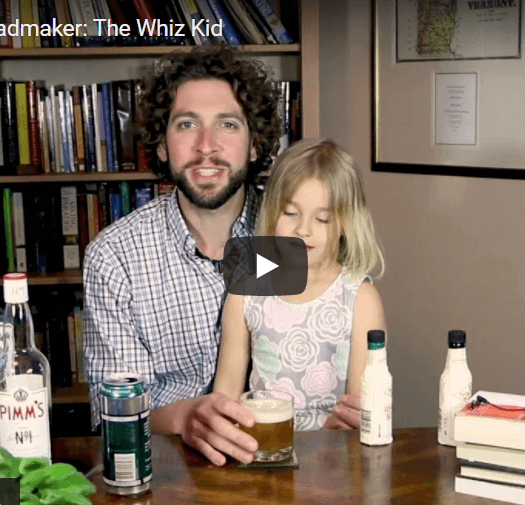In which Ricky the Meadmaker answers questions about cold crashing, barrel aging, yeasty tastes, fermentation temperatures, and why higher alcohol beverages take longer to be ready.
So, I've been thinking. Instead of relying on Word of the Week Ricky actually showing up to do a word of the week, what if I took care of doing a PSA at the beginning? Something like, "When you go to the Costco, the cart parking area is there for a reason." And I thought, no, I should let him seem like the jerk.
Welcome to Ask the Meadmaker, where I, Ricky the Meadmaker, answer your questions about mead making, mead drinking, mead brewing, and really any question you're willing to send to me.
Our first question this week is about cold crashing. Cold crashing is where you bring the temperature of your mead or beer or wine, or anything with yeast in it, down so that the yeast falls out of solution. And a bunch of people have wanted to know if I cold crash and if so to what temperature? The answer is yes, and to about 34˚F.
Our second question comes from Jonathan and he wants to know about barrel aging. Have I done it? Will I do it again? And if so, how? And have I ever done bourbon barrel aging? And the answer is, yes, I have done it. I will do it again. I am working on a top-secret project I can't tell you about. Here is a cool hack I figured out years ago, and I may have told you this before, but it is so important that you know it. You should add bourbon barrel extract to your mead. It's amazing. And here is how you make it. So, you take a barrel, like a bourbon barrel, and you fill it full of high octane, like 110 proof liquor, just clear liquor. Then you leave it for 5-8 years. Then you extract that stuff and water it down just a little bit. And it's this incredible bourbon barrel extract called bourbon, and you can pour it right into your mead.
Here's a question I get a lot and I don't answer because there's no good answer to it. So, I'm going to try anyway. Why is craft mead so much faster to brew than honey wine? Is it the alcohol content? Is it the initial sugar content? What's going on there? Is it the carbonation? And the answer is higher octane things, things with higher alcohol which means more sugar to start with, always take longer to be ready. Wines, barley wines, high alcohol meads. And no one knows why. Addendum before I get comments, lots of people think they know why. No one knows why.
Our next question comes from The JSpark, which sounds like a Jewish website that you should probably only visit in incognito mode. Anyway, The JSpark has made a melomel, a type of mead, and he's racked it multiple times, and it's still so yeasty-tasting. What's going on? The answer is it's probably not yeasty-tasting. You're probably tasting secondary metabolites from an incomplete or an inefficient primary fermentation. This is that young mead off flavor that you get. And really, I don't know what you can do at this point, except age it out.
Here's a really important question I should have answered like a million years ago, and I've gotten it a whole bunch of times. If you are pitching a different yeast strain from the one I recommend for a recipe, should you still follow my temperature recommendations? Or should you follow the recommendations on that yeast packet? The answer is the latter. Use the yeast packet, use the information they tell you. Experiment. See if they're right. But yeah, if I say, like, D47's really happy at 86˚F and you throw a lager strain in to see if you can replicate some of the mellowness of my meads, don't accidentally make yourself a steam mead.
That's our last question this week. I would send it over to Ricky with our Word of the Week, but I am not at liberty to divulge where he is at present.
Keep sending your questions and I'll get to them as soon as possible. Cheers.




